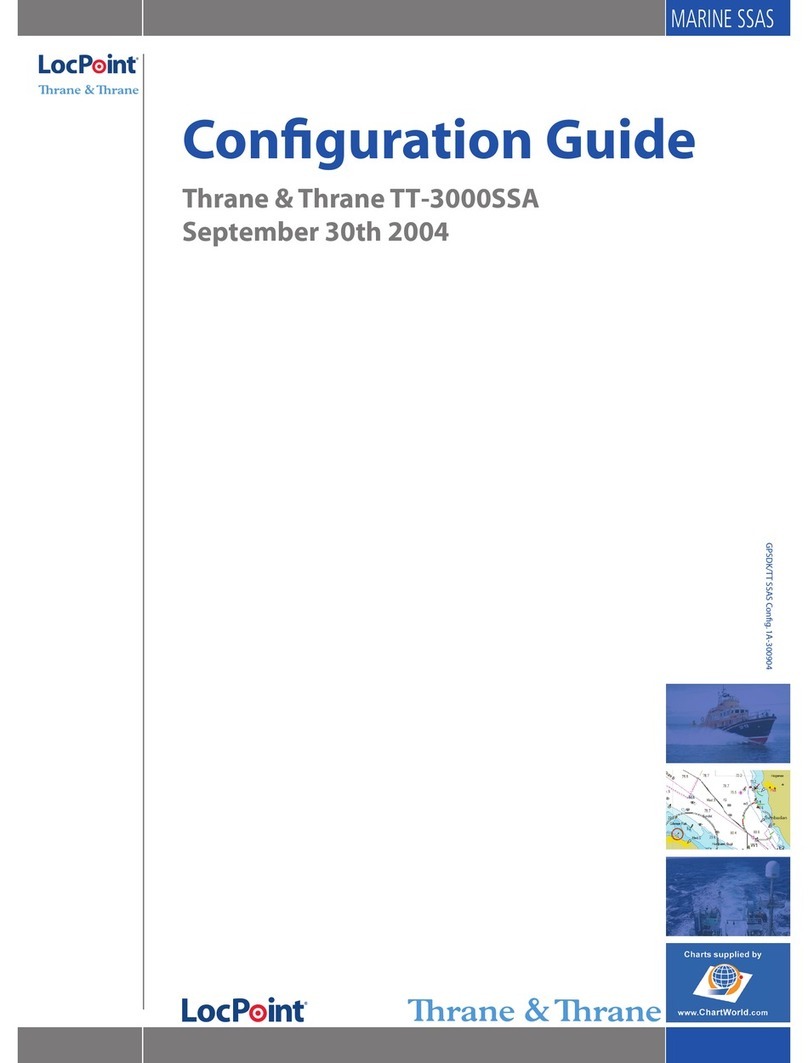iv
About the manual 2
Intended readers
This manual is an installation and user manual for the two types of
Alarm Panel, SAILOR 6101A and SAILOR 6103A. The manual is
intended primarily for installers of the system and service
personnel. Personnel installing or servicing the system must be
properly trained and authorized by Thrane & Thrane. It is
important that you observe all safety requirements listed in the
beginning of this manual, and install the system according to the
guidelines in this manual.
Manual overview
This manual has the following chapters:
•Introduction - a short description of the two types of
Alarm Panel.
•Using the Alarm Panel - a short guide on how to use the
Alarm Panel to send distress alerts, receive distress or urgency
messages, set up light and sound and test the Alarm Panel.
•Installing the Alarm Panel - a description of how to unpack,
store and install the Alarm Panel.
•Connecting cables - descriptions and pin-out for the
connectors, guidelines for connecting the Alarm Panel and
descriptions of the buttons.
•Service and repair - a short description of how to handle
defective units.
•Specifications - technical specifications for the Alarm Panel.






























